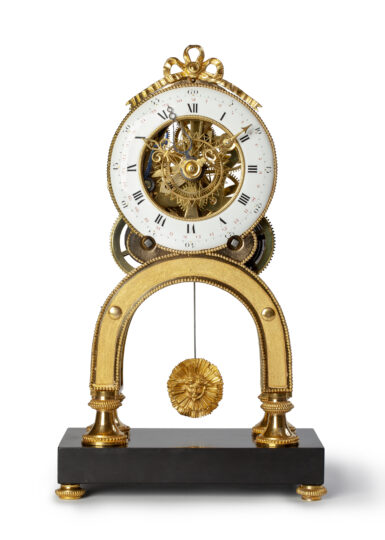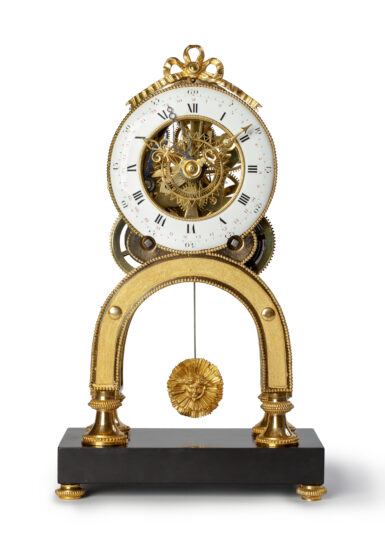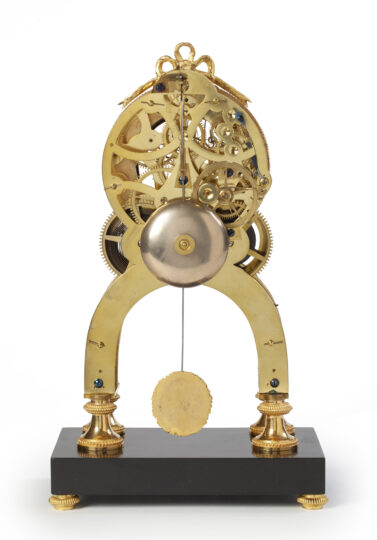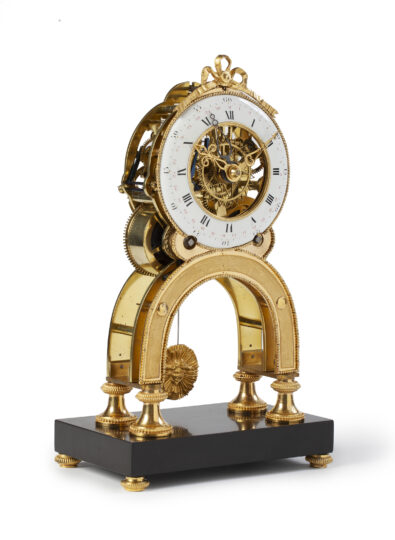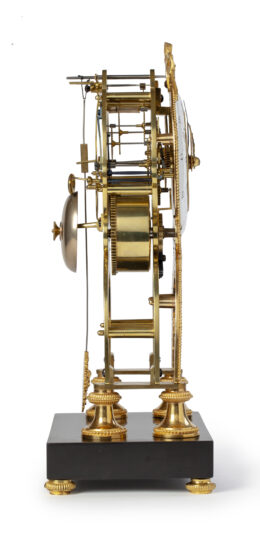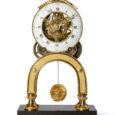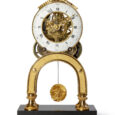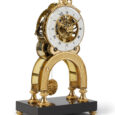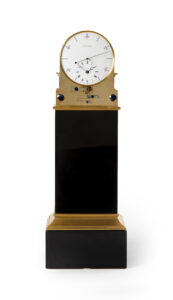LOUIS XVI SKELETON CLOCK Ca. 1780 France
M&R90
LOUIS XVI SKELETON CLOCK
Circa 1780
France
Movement
The spring-driven, eight-day movement is constructed between skeletonised circular plates and has anchor escapement with silk-suspended pendulum. It has hour and half-hour striking on a bell, regulated by a count wheel on the backplate. The clock has two winding arbors and is wound from the back
Dial
The circular enamel ring dial is set in a gilt-brass pearl string on the outside and a rope ring on the inside. The chapter ring has Roman hour, Arabic five-minute and minute divisions, as well as an Arabic date ring in red. The time is indicated by a fine period pair of pierced and engraved gilt-brass hands, whilst the date is indicated by a pierced blued-steel pointer.
Case
The gilt-brass skeleton is situated on a black marble base and is embellished by pearl strings. The movement rests on two arches on four shaped feet. The pendulum, which has an Apollo-shaped bob set in a sunburst backdrop, oscillates between the arches. The dial is surmounted by a looped ribbon with bow.
Duration 1 week.
Height 31 cm.
Width 18 cm.
Depth 11 cm.
Literature
– Derek Roberts, Continental and American Skeleton Clocks, West Chester, 1989, p. 41
– J. Hall, Dictionary of Subjects and Symbols in Art, London, 1980, pp. 25-26
Apollo
Apollo alias the sun god (Phoebus Apollo= the radiant) is one of the twelve gods of Olympus. He was the son of Zeus (Jupiter) and Leto and the twin brother of Artemis (Diana). He later became identified with the sun-god Helios (Sol). He represented the ideal form of male physical beauty. He is usually portrayed as a young man, beardless, with delicate, sometimes rather effeminate features. His hair is long. He is often depicted with a lyre as he was the patron of music and leader of the Muses.

